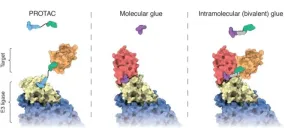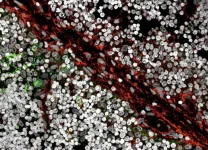Heart failure is a condition in which the heart cannot pump enough oxygen-rich blood to the organs, causing a variety of symptoms. Heart failure cannot be cured but symptoms can be treated and managed to improve quality and length of life. According to the World Heart Federation, more than 64 million people worldwide have heart failure.
According to the researchers, it is theorized that maternal stress shortly before or during pregnancy may lead to an adverse intrauterine environment, which may increase the risk of adverse pregnancy outcomes, as well as worsen the cardiovascular risk profile and increase the risk of cardiovascular disease later in life for offspring. The death of a close relative is considered one of the most severe sources of stress. For the purposes of this study, prenatal stress was defined as maternal bereavement and used to investigate the role of severe prenatal stress on the development of heart failure by middle age.
“The death of a close relative is considered by several classification systems of sources of stress as one of the most adverse life events. It is often regarded as an objective source of stress that is likely to be perceived as stressful and that requires readjustments by most individuals, irrespective of their coping resources,” said Fen Yang, MD, a PhD student in the Department of Global Public Health at the Karolinska Institutet in Stockholm, Sweden. “We thus hypothesized that if prenatal stress is involved in the causation of heart failure diagnosis up to middle-age, we may expect to observe an association between the death of a close family member—in particular, in cases of losses of a spouse or child or in the case of unexpected losses—and the risk of heart failure up to middle-age.”
The study cohort included over 6,700,000 live singleton births in Denmark and Sweden between 1973 and 2016. Using nationwide registries, the researchers retrieved information on deaths of the mothers’ close family members (partner, older children, parents and siblings) and offspring’s heart failure up to 2016 in Denmark and 2020 in Sweden.
Exposure to prenatal stress was defined as maternal loss of a close family member (older child, partner, sibling or parent) in the year before or during pregnancy. Pregnancy loss was not included in the definition. If there were several losses during the exposure period, researchers counted the first loss as the date of exposure. Exposure was also categorized in three ways: 1) the mother’s relationship to the deceased; 2) the deceased family member’s cause of death (natural or unnatural as defined by the International Classification of Diseases); and 3) time of loss (year before pregnancy, first, second or third trimester of pregnancy).
In the study cohort, 167,192 study participants experienced prenatal stress due to maternal bereavement in the year prior to or during pregnancy. Mothers in the exposed group were more likely to be older, married, smokers and have a family history of cardiovascular disease compared to mothers in the unexposed group.
During the follow up period (median follow up time was 24.2 years), 4,812 offspring were diagnosed with heart failure. More severe forms of maternal loss, including loss of a partner or older child, were associated with heart failure diagnosis. However, the loss of other close family members in the year before or during pregnancy was not associated with increased risk of heart failure in the offspring except in the case of unnatural death of the family members. There was no substantial difference in the risk of heart failure when the exposure was categorized by time of bereavement event in relation to pregnancy.
“We found that only the most severe forms of maternal bereavement were associated with the offspring’s risk of heart failure up to middle-age. Whether mental health or other types of stress, for example financial difficulties, work and marital stress or other adverse life events could influence the risk of heart failure, not only at a young age, but also in older ages than we could study in the current cohort would need to be determined in future studies,” said Krisztina László, PhD, with the Department of Global Public Health at the Karolinska Institutet and the senior author of the study.
Study limitations include the failure to identify some milder forms of heart failure, the inability to rule out the possibility of residual confounding due to unmeasured genetic and familial lifestyle and health-related factors. The researchers also did not have information regarding the mother’s participation in psychotherapy or other interventions for bereaved individuals.
The American College of Cardiology (ACC) is the global leader in transforming cardiovascular care and improving heart health for all. As the preeminent source of professional medical education for the entire cardiovascular care team since 1949, ACC credentials cardiovascular professionals in over 140 countries who meet stringent qualifications and leads in the formation of health policy, standards and guidelines. Through its world-renowned family of JACC Journals, NCDR registries, ACC Accreditation Services, global network of Member Sections, CardioSmart patient resources and more, the College is committed to ensuring a world where science, knowledge and innovation optimize patient care and outcomes. Learn more at www.ACC.org or follow @ACCinTouch.
The ACC’s family of JACC Journals rank among the top cardiovascular journals in the world for scientific impact. The flagship journal, the Journal of the American College of Cardiology (JACC) — and family of specialty journals consisting of JACC: Advances, JACC: Asia, JACC: Basic to Translational Science, JACC: CardioOncology, JACC: Cardiovascular Imaging, JACC: Cardiovascular Interventions, JACC: Case Reports, JACC: Clinical Electrophysiology and JACC: Heart Failure — pride themselves on publishing the top peer-reviewed research on all aspects of cardiovascular disease. Learn more at JACC.org.
###
END





